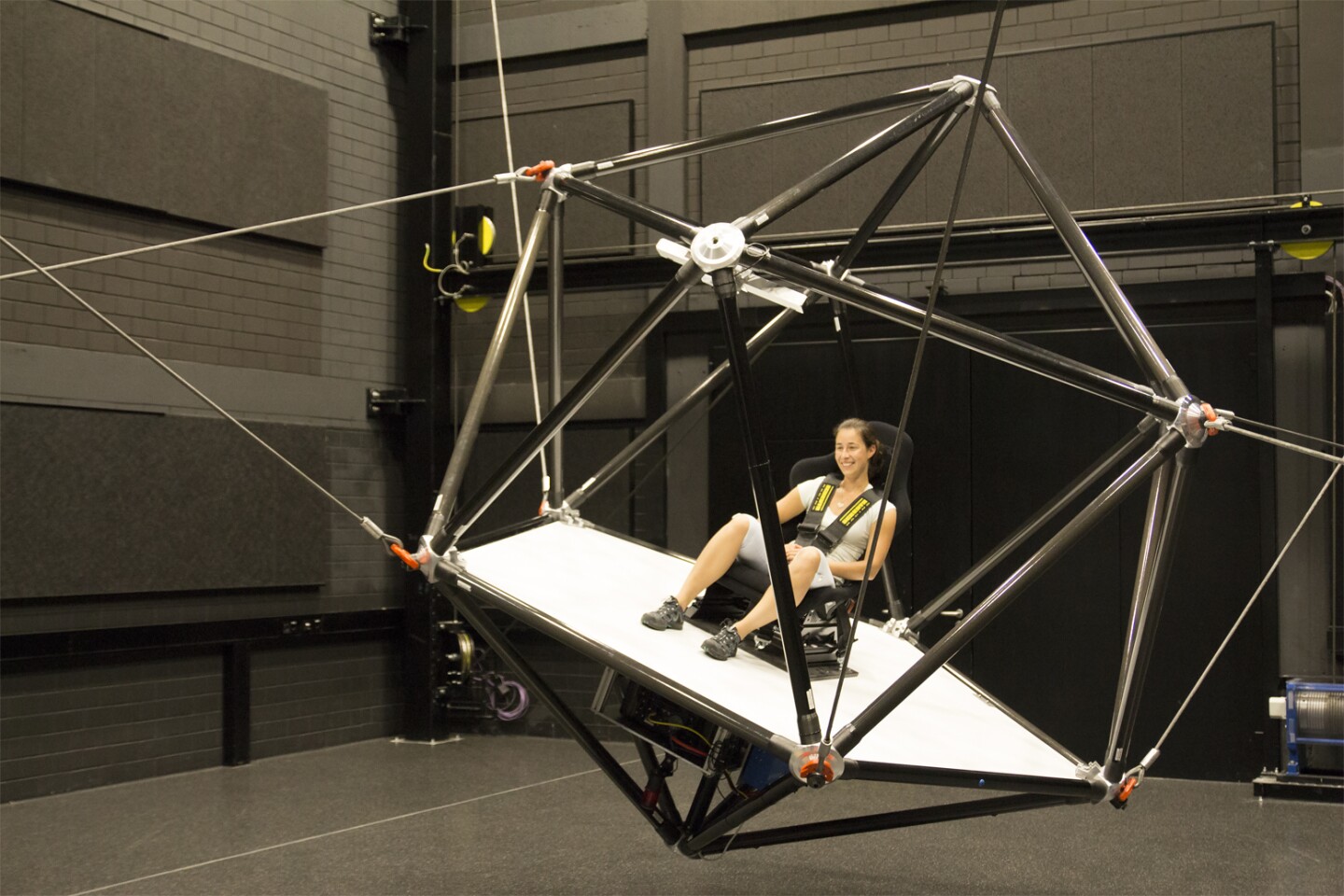A new type of motion simulator has been developed that comprises a cabin suspended and maneuvered by robotically-controlled steel cables. It is able to be installed in rooms of varying sizes, and can be moved greater distances and at greater speeds than conventional simulators.
The simulator has been developed over a two-year period by applied research organization Fraunhofer IPA in collaboration with the Max Planck Institute for Biological Cybernetics (MPI). It is based upon cable-driven technology that can be used for moving around large objects in large spaces (such as factories and warehouses) that conventional robots cannot, or even for turning telescopes.
In this instance, the payload is the cabin in which the user sits. The cabin has been made from strong carbon fiber tubes and is designed to withstand the high forces acting upon it as it is pulled to and fro by the cables. A diameter of 260 cm (102 in) allows for enough space inside to install projection surfaces or cockpit instrumentation, although the version used for testing remains unenclosed with only a frame, and is instead used with a wireless virtual reality headset.
The cabin is suspended by eight cables that are each tensioned at up to 1.4 tons (1.3 tonnes) and are attached to winches. The winches control the direction and speed of the cabin as they coil and uncoil, and can be programmed to move it freely throughout the space.

The low 80 kg (176 lb) weight of the cabin frame, the 5 x 8 x 5 m (16 x 26 x 16 ft) space in which the cabin can be flown and a total winch drive power of 348 kW (467 hp) allow for acceleration of up to 420 m/s/s (meters per second squared), which is far greater than is possible with conventional, actuator-mounted simulators. As a result, movement sensations can be simulated that are also not possible in conventional simulators, with forces acting upon the cabin of up to 1.5 g.
Fraunhofer suggests that the technology could be used as might be expected for driving or flight simulation, but also to explore perception processes in humans in ways that have not been possible before.
The video below shows the simulator in action.
Source: Fraunhofer IPA





